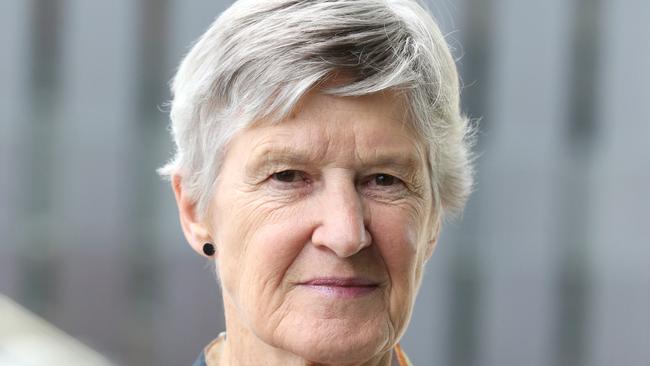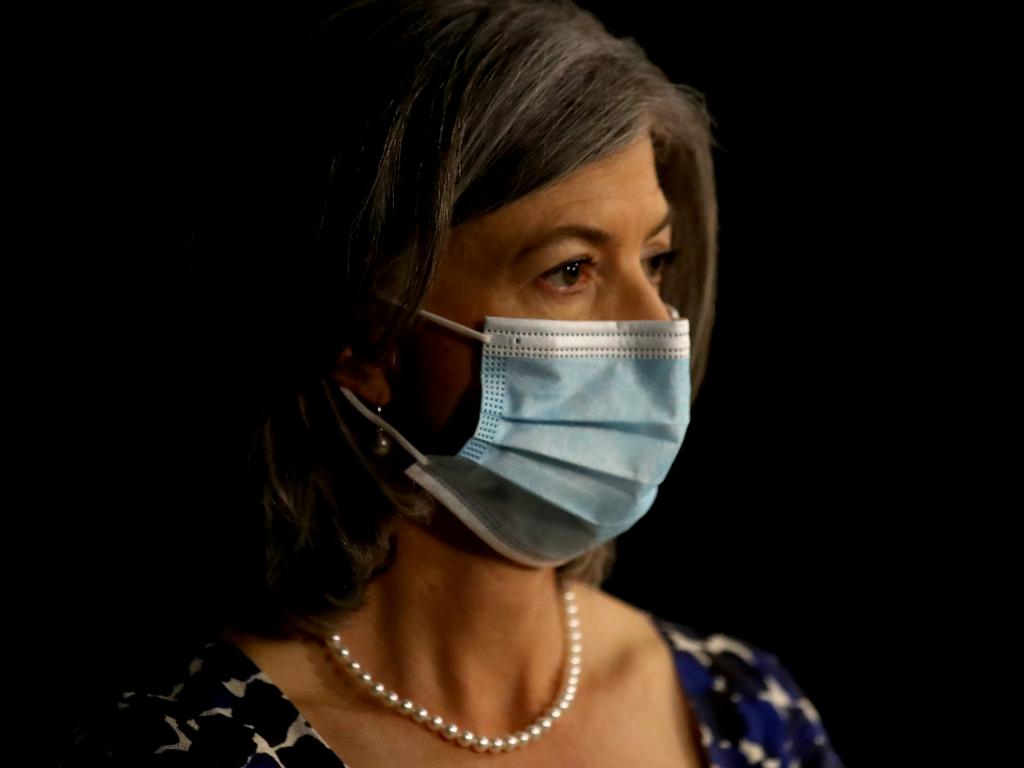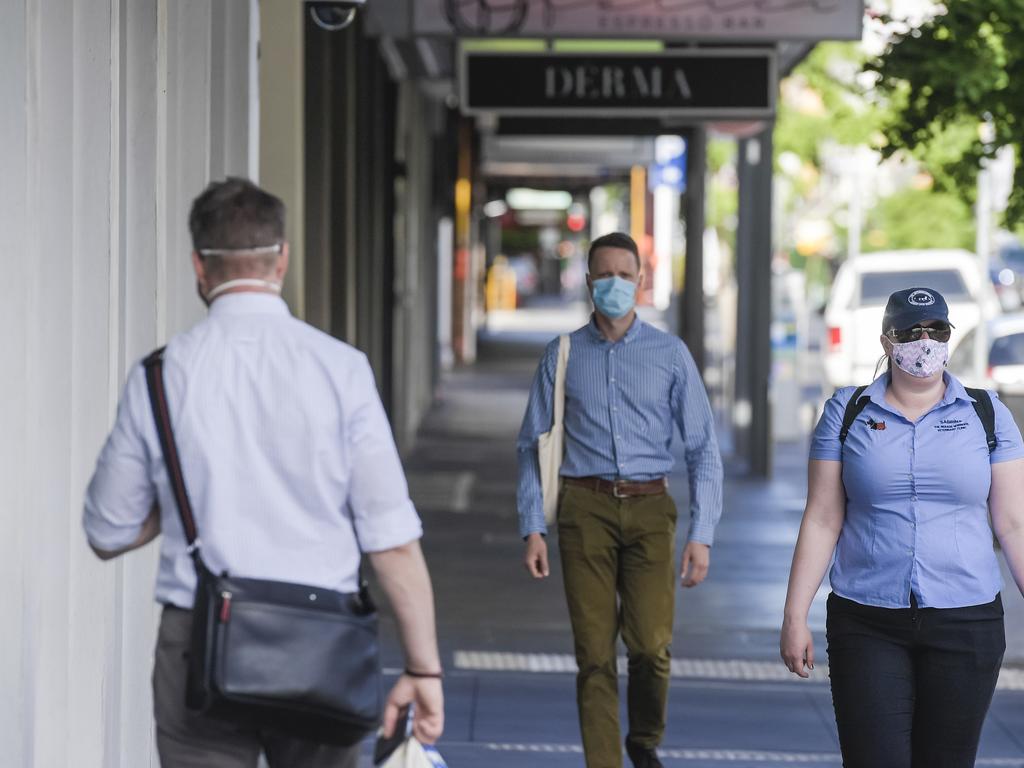Infection Control Expert Group chair Lyn Gilbert answers critics
Infection Control Expert Group chair Lyn Gilbert responds to claims COVID-19 guidelines are deficient.

The role of airborne transmission in the spread of COVID-19 has stirred significant controversy. Thousands of healthcare workers have become infected with the disease in Victoria, prompting criticism from doctors that the Infection Control Expert Group’s guidelines are deficient. ICEG chair Lyn Gilbert now responds. She spoke with health editor Natasha Robinson
What is your view of how COVID-19 is transmitted?
My view is not much different, in general, from what it was at the start of the pandemic. There’s been a lot of talk about new evidence but I think the evidence was always there that, like most respiratory viral infections, COVID is mainly spread by respiratory particles that are produced when people talk or cough or shout or sing, and that come in a range of sizes. The majority of them are relatively large droplets that are visible or can be felt, as drops of moist spit. They tend to travel a short distance and settle on surfaces. That’s the main route of transmission.
However, there are also smaller particles, the proportion of which is quite variable. Some can remain suspended in the air for longer periods of time. A lot of things can influence the variability — for example, whether someone is speaking quietly or shouting or singing. And the more respiratory secretions are produced the further and more forcefully they’ll be projected. Droplets may be projected for greater distances — possibly more than 1.5m if someone shouts loudly — and there are probably more small particles that remain suspended.
The other things that influence spread include ventilation, air currents, humidity and temperature, all of which are highly variable.
What is the role of airborne transmission?
I think it’s a small part of it most of the time but not all the time.
What I was talking about, up until now is just the secretions that people produce normally, whether or not they have an infection. If they’re infected, how much virus is in the respiratory particles depends on the stage of their illness and whether the infection is affecting the upper part or lower part of the respiratory tract, among other things. And so there’s a lot of variability in how much virus is likely to be spread.
And the previous evidence, particularly in relation to flu, is that these small particles generally dry out very quickly and don’t contain much virus. So although there may be quite a lot of them, and they’re rapidly dispersed on air currents and so they don’t necessarily cause infection.
With COVID, we know that when people are in an enclosed space with poor ventilation, it’s more likely to spread. And clearly, only a very small amount of virus is required to infect most people, although it depends on how susceptible the person exposed to it is.
Experience with COVID has modified how we interpret the evidence. We now recognise some circumstances in which there is an increased risk of healthcare workers becoming infected, for example. One explanation is that this is sometimes due to airborne spread. There are many other factors that contribute to healthcare workers’ infections with COVID and it is often very difficult to be sure what they are. which is why there’s a lot of the controversy about it.
What is your response to the number of healthcare worker infections in Victoria?
Well, there have been a lot of them. And it’s certainly clear that at least in the second wave, most of them were acquired at work.
But being acquired at work doesn’t necessarily mean a failure of PPE, there are lots of anecdotal stories about staff crowding together in tea rooms and in lifts, and sharing transport, without PPE and without social distancing. I think that stopped after a while, but certainly early on, it was very common.
What would you say about where PPE stands in the hierarchy of controls?
It’s important, but on its own it won’t stop people becoming infected, I think that’s the important thing. And it needs to be used properly. In the past, there’s been too little training of healthcare workers in really understanding what they’re doing when they use PPE and I think that’s got to improve in future.
What’s your response to calls for your resignation and claims that the high rate of healthcare worker infections in Victoria represents a failure of the Infection Control Expert Group?
Well, it’s not a failure of ICEG. This committee consists of some of the most experienced experts in infection control and infectious disease in the country who interpret new evidence based on their practical knowledge and experience. I am just one member.
Some of the people who have most strongly criticised us have been doctors who until recently had little interest in routine infection control that was designed to protect patients. They are quite rightly concerned when they feel themselves to be at risk, but a lot of people who’ve never been experts before have suddenly become experts.
And I can understand that they’re concerned about their safety, and we certainly appreciate that. But I think it’s also important to say that, despite all the criticism, we’ve had very strong support from the Australian Health Protection Principal Committee. All of our recommendations have been scrutinised by each of the Chief Health Officers and their respective infection control teams within the state and territory health departments. We’ve always accepted that there will be differences in how guidelines are implemented between the states and territories, and we’ve never suggested there’s only one way to do these things. But I think that the basic recommendations are sound. And by and large, they’re consistent with other guidelines internationally.
So it’s unfair in your view to blame the committee for the rate of healthcare worker infections?
Of course. As I said, there are lots of reasons why healthcare workers have become infected which are not related to the guidance. In Australia we’ve really done extraordinarily well. There have been a lot of healthcare worker infections, but we know that the reasons are complicated. Healthcare workers are working under a lot of stress. They are often working incredibly hard and there are attention lapses.
I think, unfortunately, there’s been an attitude amongst hospital administrators, in the past, that infection control is something that, can be managed by appointing a few infection control professionals, But, you know, they don’t put a lot of effort in to actually making sure that healthcare workers observe infection-control measures. And whilst they have been much more careful, during the COVID outbreaks, no doubt, you can’t really train everybody up to speed in a crisis. It’s something that’s got to be built into the culture of healthcare and hospital workers. And it hasn’t been until recently.








To join the conversation, please log in. Don't have an account? Register
Join the conversation, you are commenting as Logout